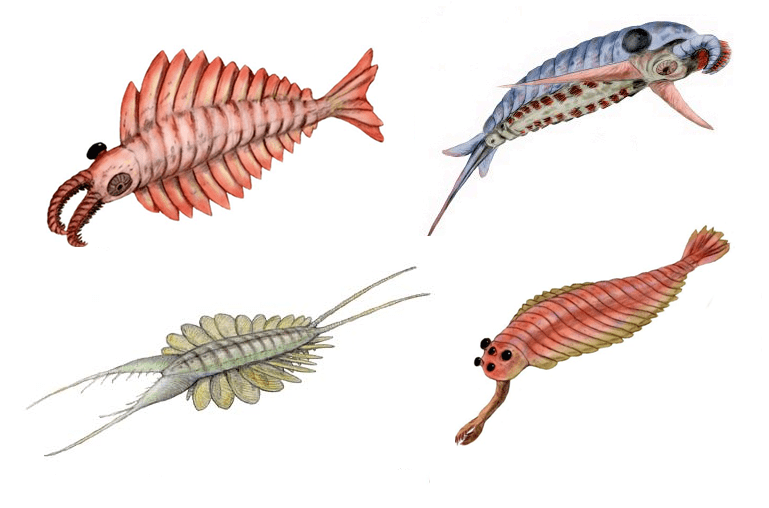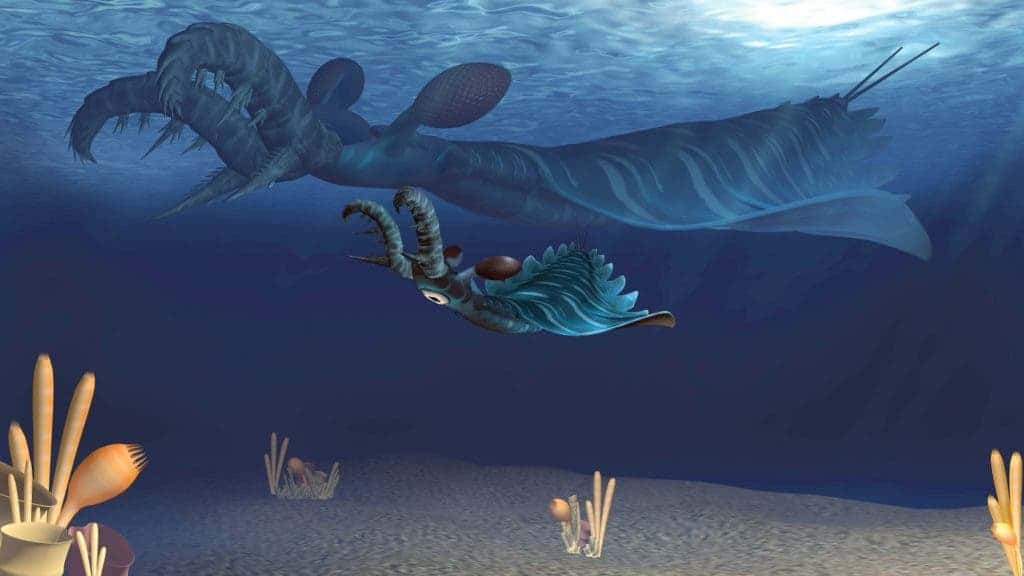The “creepy crawly” animal group known as the Arthropoda, which includes spiders, insects, and crustaceans, has been responsible for producing many scary creatures. But few of them, if any, were as terrifying as the Radiodonta.

Estimates of how different Radiodonta species would have looked like. Image credits: Renato de Carvalho Ferreira.
The Radiodonta (literally meaning “radiating teeth”) are the earliest large predators ever discovered. They had no proper legs, their member being turned into fin-like lateral flaps, helping them chase and catch their prey. They were armed with large, spiny raptorial (or grasping) appendages at the front of the head, and the mouth was surrounded by a ring of radiating tooth plates, hence their name.
During the Cambrian period, 500 million years ago, these early predators were patrolling the seas, looking for any unfortunate creatures to hunt and kill. As if they weren’t scary enough on their own, their babies were also killing machines, a new study has shown.
Researchers working in China have identified an exceptionally-preserved juvenile of a species called Lyrarapax unguispinus from the early Cambrian (518 million-year-old). The specimen measures only 18 mm, is extraordinarily well developed, even featuring the spiny grasping appendages. Essentially, the juvenile looks like a miniature adult.
Since these appendages were used for only one purpose (hunting and killing), researchers believe that Lyrarapax was perfectly equipped for hunting, even from an early age.

As if adults weren’t scary enough, the babies were also killing machines. Image credits: Science China Press.
This is not an ancient or a unique feature: modern praying mantises, mantis shrimps, and arachnids also produce well-equipped offspring, suggesting that this feature emerged early in the evolutionary history of arthropods. The fossil also offers an important piece of evidence for understanding 500-million-year-old environments, as well as one of the most dramatic events in Earth’s biological history: the Cambrian Explosion.
This was possibly the most important evolutionary event in the history of life on Earth. It represents the period when most major animal phyla appeared in the fossil record, and also when the first true predators emerged. Predators changed the entire structure of ecosystems, as they introduced a previously inexistent requirement for creatures: the need to avoid being hunted.
It’s estimated that the emergence of these predators was a major driver of this evolutionary event: predators placed strong selective pressures on animal communities, forcing prey species to adapt and evolve or face extinction.
The fact that the juvenile radiodonts were seemingly fierce hunters from their earliest stages only increases these pressures, especially on smaller creatures.
Journal Reference: Liu, J. N., Lerosey-Aubril, R., Steiner, M., Dunlop, J. A., Shu, D. G. & Paterson, J. R. 2018.Origin of raptorial feeding in juvenile euarthropods revealed by a Cambrian radiodontan. National Science Review. https:/









